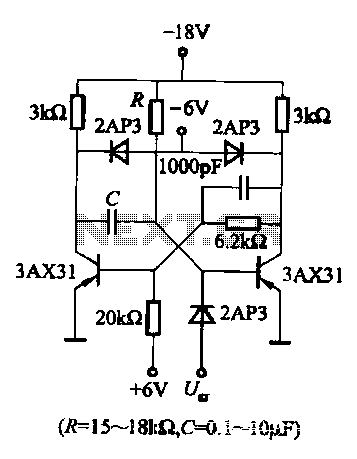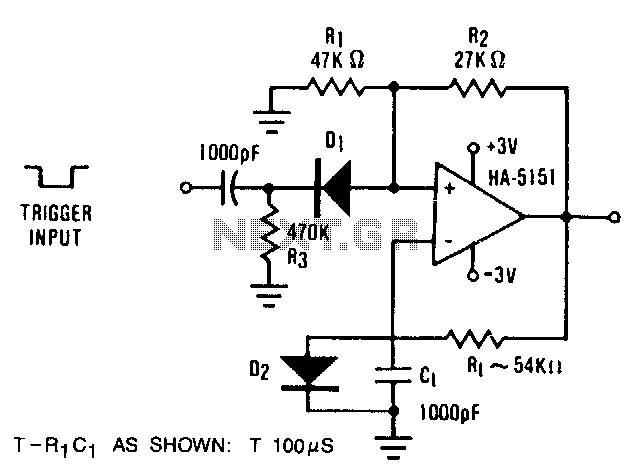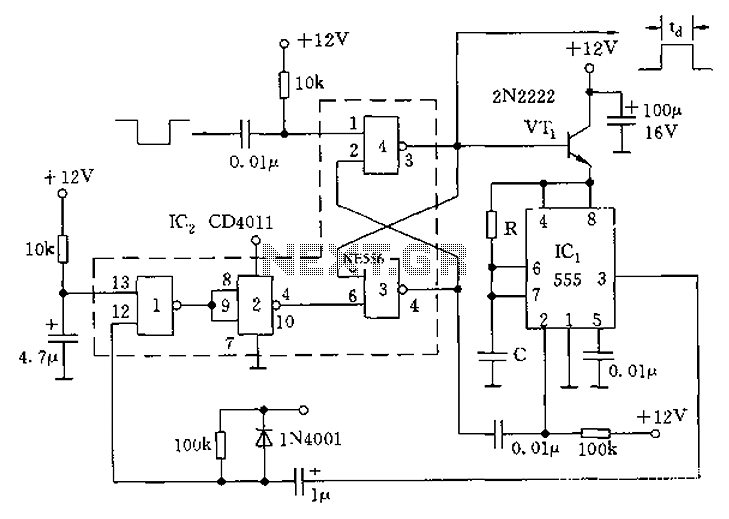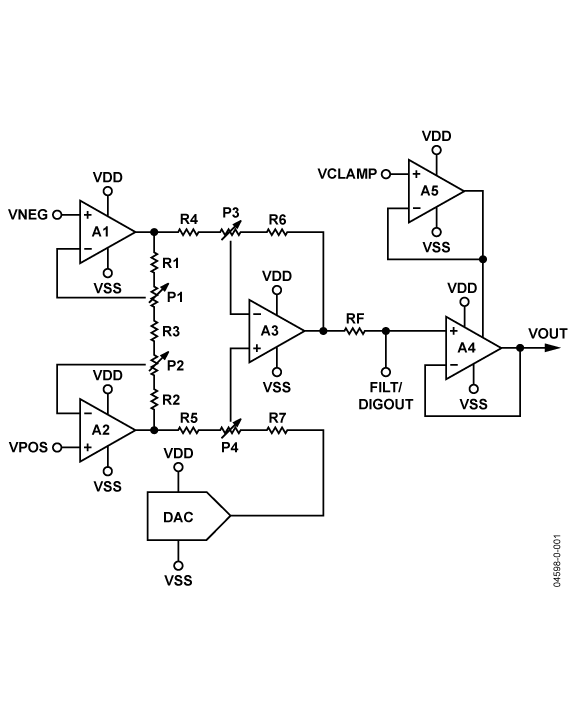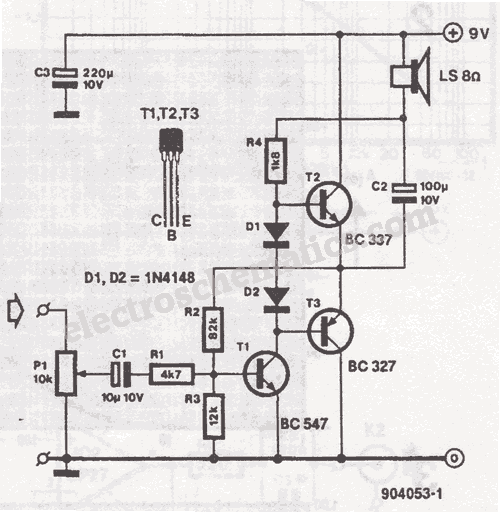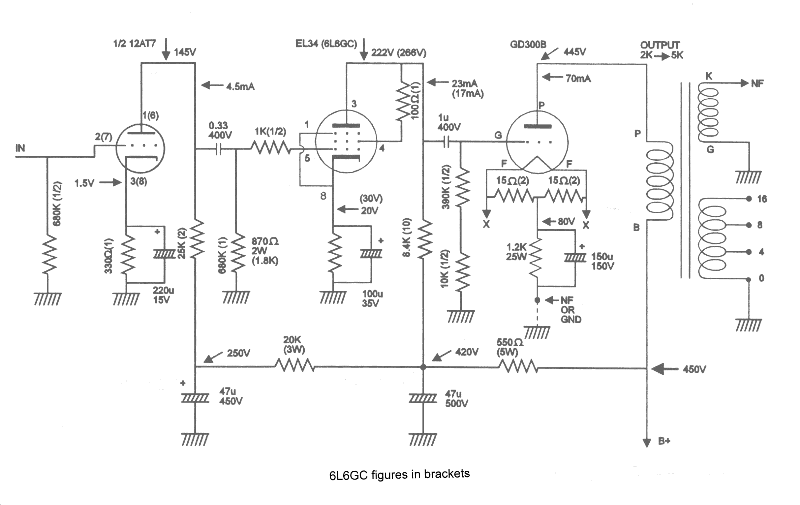
Aikido octal mono PCBs and 5687 PCBs and Aikido and 300B amplifiers
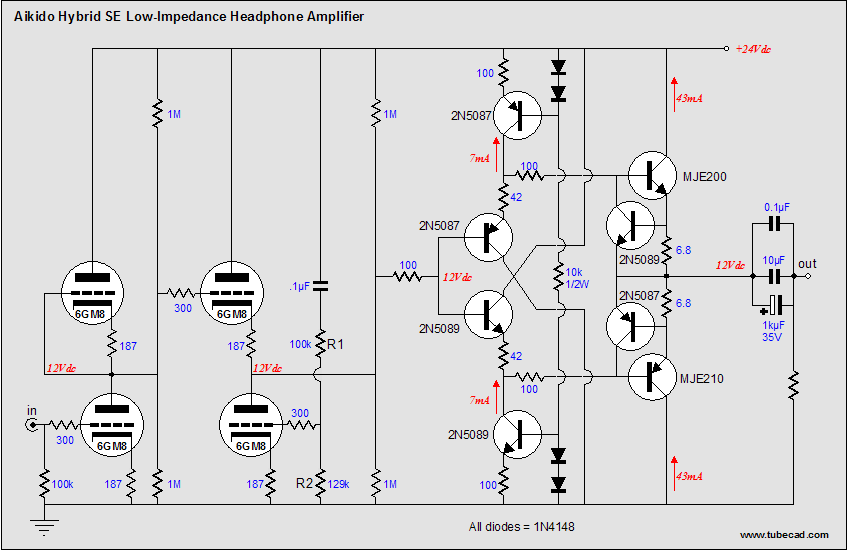
Buffers are a specific category of amplifiers, and power buffers are a subset of power amplifiers. The defining characteristics of all buffers include unity gain and a low impedance output, ideally accompanied by low distortion. When examining commercially available buffers, a notable feature that is often included is wide bandwidth; however, for audio applications, a bandwidth of up to 100 kHz is typically sufficient. Many high-quality tube amplifiers have a power bandwidth that only extends to 40 kHz. A common characteristic of many buffers is the absence of global feedback loops. This feedback-free design allows for more flexibility when integrating a global feedback loop around both the voltage amplifier and the power buffer, especially when the buffer replaces the power output stage of an amplifier that cannot drive low impedance loads on its own. For applications involving solid-state power buffers following vacuum tube voltage amplifiers, low distortion is the primary goal, with low output impedance and feedback-free operation as secondary considerations. However, achieving low distortion in buffers often requires high idle current, leading to a preference for class-A operation. Push-pull class-A output stages are inherently clean due to the absence of sharp on-off transitions, resulting in smoother transfer curves. Class-A operation helps to avoid issues like switching distortion, gm doubling, and complex bias adjustments, but it is inefficient, demanding significant current and generating considerable heat, which necessitates large heatsinks and robust transformers. This inefficiency is well-known among professionals in the high-end audio industry. For instance, a recent catalog from Audio Advisor presented the Vincent SV236 integrated amplifier, which claims to operate in class-A mode. However, this assertion may not hold true for the output stage, as it is likely to operate in class-B after the initial 10 watts. The amplifier's design includes three 12AX7 tubes, leading to speculation about its operational classification. Although the amplifier appears to conform to traditional designs, it may incorporate advanced cooling techniques to manage the heat generated by class-A operation.
A buffer amplifier is designed to provide a high input impedance and a low output impedance, enabling it to effectively drive loads while preventing signal degradation. The unity gain feature ensures that the output voltage follows the input voltage without amplification, making the buffer ideal for impedance matching. The low output impedance characteristic is crucial, particularly when interfacing with low impedance loads, as it minimizes the voltage drop across the buffer and maintains signal integrity.
In practice, a solid-state power buffer typically consists of a complementary push-pull configuration of transistors, which helps achieve low distortion and high linearity. The use of a feedback-free design can be advantageous, particularly in high-fidelity audio applications, as it reduces the potential for feedback-induced distortion and enhances the overall sound quality. The choice of components, including high-quality capacitors and resistors, further influences the performance of the buffer.
Thermal management is a critical aspect of buffer design, especially in class-A configurations. Adequate heatsinking and possibly active cooling solutions, such as fans or Peltier devices, are essential to dissipate heat generated during operation. This ensures that the buffer operates within safe temperature limits, prolonging its lifespan and maintaining performance.
When integrating a power buffer with a vacuum tube voltage amplifier, careful consideration of the electrical characteristics and operational modes is vital. The transition from the tube stage to the solid-state buffer should be seamless, maintaining the desired tonal qualities while providing the necessary power to drive the subsequent stages of the audio system.Buffers belong in a subset of amplifiers, in general. In addition, power buffers can be thought of as belonging to a subset of power amplifiers, in specific. (Isn`t taxonomy fun ) The uniting features for all buffers are unity gain and a low impedance output (and, we would hope, low distortion).
When we look for commercially made buffers, however, we see that a third feature has been wedged into the feature list ”namely, wide bandwidth. Yet for our ear-restricted purposes, bandwidth to 100 kHz is more than enough. (In fact, many great sounding tube amplifiers have a power bandwidth that only extends up to 40 kHz. ) A common, but not universal, additional feature that many buffers share is that they are feedback free well, at least, global feedback loop free. (Since the buffer is often used to replace the power output stage of an amplifier ”say a low-noise amplifier that cannot on its own drive low impedance loads ”feedback-free allows more latitude in wrapping one global feedback loop around both the voltage amplifier and the power buffer.
) For our purposes, namely, using a solid-state power buffer after a vacuum tube voltage amplifier, low distortion is primary; with low-output impedance and freedom from feedback coming second and third. However, a low distortion buffer comes at a price: high idle current. Ideally, our buffers should only be run under class-A operation. Push-pull class-A output stages are naturally clean, as sharp on-off transitions are excluded and the two output devices` transfer curves combine in single flatter curve; additionally, class-A operation prevents the problems of switching distortion, gm doubling, and tweaky bias adjustments.
Class-A operation, however, is far from efficient. In spite of what the glossy ads say, class-A is brutal, requiring a heavy current draw and lots of heat, requiring massive heatsinks and heavy transformers. This isn`t news and everyone knows this, except for those who work in the high-end audio industry. For example, just the other week, I received a catalog from Audio Advisor. First of all, I like Audio Advisor; in fact, I buy stuff from them and will continue to do so. Now comes the but. But someone who understands amplifier modes of operation, say an appliance repairman or a high-school science teacher (or anyone who does not regularly attend Stereophile shows), should point out that the Vincent SV236 integrated amplifier, shown on page 53, contrary to what is stated, most likely is not a class-A one.
Well, at least not its output stage. Yet, the amplifier`s description touts: My first thought was, Since the unit held three 12AX7s and everybody knows tube gear is from Venus and science and math are from Mars, all the normal rules of electrical engineering could be dismissed: if you think it is a 100W class-A, it is. My second thought was, Wait a minute; isn`t Vincent a German company Aren`t the Germans known for being exact Even when they are wrong, they are wrong in an exacting way.
So, maybe this 17-inch wide, 6-inch tall chassis does indeed hold two 100-watt class-A amplifiers and three 12AX7s. What if six muffin fans are mounted on the bottom or what if Peltier cooling devices were liberally used and connected to large and massive heat-sinks inside with a powerful fan blowing through it What if no power transformer was used, relying instead on a rectified wall voltage, like the old Futterman OTL amplifiers Well, I had almost convinced myself that it was possible to cram all those 200 class-A watts into a conventional looking integrated amplifier`s chassis.
I then visited Audio Advisor`s website to see if I could copy the text I quoted above (yes, I am that lazy). Well, guess what The Vincent Audio SV-236 hybrid amplifier does sport a class-A output stage, for the first ten watts, thereafter it runs in class-B.
Here is what their website says : The double-triode tube ci 🔗 External reference
A buffer amplifier is designed to provide a high input impedance and a low output impedance, enabling it to effectively drive loads while preventing signal degradation. The unity gain feature ensures that the output voltage follows the input voltage without amplification, making the buffer ideal for impedance matching. The low output impedance characteristic is crucial, particularly when interfacing with low impedance loads, as it minimizes the voltage drop across the buffer and maintains signal integrity.
In practice, a solid-state power buffer typically consists of a complementary push-pull configuration of transistors, which helps achieve low distortion and high linearity. The use of a feedback-free design can be advantageous, particularly in high-fidelity audio applications, as it reduces the potential for feedback-induced distortion and enhances the overall sound quality. The choice of components, including high-quality capacitors and resistors, further influences the performance of the buffer.
Thermal management is a critical aspect of buffer design, especially in class-A configurations. Adequate heatsinking and possibly active cooling solutions, such as fans or Peltier devices, are essential to dissipate heat generated during operation. This ensures that the buffer operates within safe temperature limits, prolonging its lifespan and maintaining performance.
When integrating a power buffer with a vacuum tube voltage amplifier, careful consideration of the electrical characteristics and operational modes is vital. The transition from the tube stage to the solid-state buffer should be seamless, maintaining the desired tonal qualities while providing the necessary power to drive the subsequent stages of the audio system.Buffers belong in a subset of amplifiers, in general. In addition, power buffers can be thought of as belonging to a subset of power amplifiers, in specific. (Isn`t taxonomy fun ) The uniting features for all buffers are unity gain and a low impedance output (and, we would hope, low distortion).
When we look for commercially made buffers, however, we see that a third feature has been wedged into the feature list ”namely, wide bandwidth. Yet for our ear-restricted purposes, bandwidth to 100 kHz is more than enough. (In fact, many great sounding tube amplifiers have a power bandwidth that only extends up to 40 kHz. ) A common, but not universal, additional feature that many buffers share is that they are feedback free well, at least, global feedback loop free. (Since the buffer is often used to replace the power output stage of an amplifier ”say a low-noise amplifier that cannot on its own drive low impedance loads ”feedback-free allows more latitude in wrapping one global feedback loop around both the voltage amplifier and the power buffer.
) For our purposes, namely, using a solid-state power buffer after a vacuum tube voltage amplifier, low distortion is primary; with low-output impedance and freedom from feedback coming second and third. However, a low distortion buffer comes at a price: high idle current. Ideally, our buffers should only be run under class-A operation. Push-pull class-A output stages are naturally clean, as sharp on-off transitions are excluded and the two output devices` transfer curves combine in single flatter curve; additionally, class-A operation prevents the problems of switching distortion, gm doubling, and tweaky bias adjustments.
Class-A operation, however, is far from efficient. In spite of what the glossy ads say, class-A is brutal, requiring a heavy current draw and lots of heat, requiring massive heatsinks and heavy transformers. This isn`t news and everyone knows this, except for those who work in the high-end audio industry. For example, just the other week, I received a catalog from Audio Advisor. First of all, I like Audio Advisor; in fact, I buy stuff from them and will continue to do so. Now comes the but. But someone who understands amplifier modes of operation, say an appliance repairman or a high-school science teacher (or anyone who does not regularly attend Stereophile shows), should point out that the Vincent SV236 integrated amplifier, shown on page 53, contrary to what is stated, most likely is not a class-A one.
Well, at least not its output stage. Yet, the amplifier`s description touts: My first thought was, Since the unit held three 12AX7s and everybody knows tube gear is from Venus and science and math are from Mars, all the normal rules of electrical engineering could be dismissed: if you think it is a 100W class-A, it is. My second thought was, Wait a minute; isn`t Vincent a German company Aren`t the Germans known for being exact Even when they are wrong, they are wrong in an exacting way.
So, maybe this 17-inch wide, 6-inch tall chassis does indeed hold two 100-watt class-A amplifiers and three 12AX7s. What if six muffin fans are mounted on the bottom or what if Peltier cooling devices were liberally used and connected to large and massive heat-sinks inside with a powerful fan blowing through it What if no power transformer was used, relying instead on a rectified wall voltage, like the old Futterman OTL amplifiers Well, I had almost convinced myself that it was possible to cram all those 200 class-A watts into a conventional looking integrated amplifier`s chassis.
I then visited Audio Advisor`s website to see if I could copy the text I quoted above (yes, I am that lazy). Well, guess what The Vincent Audio SV-236 hybrid amplifier does sport a class-A output stage, for the first ten watts, thereafter it runs in class-B.
Here is what their website says : The double-triode tube ci 🔗 External reference
Warning: include(partials/cookie-banner.php): Failed to open stream: Permission denied in /var/www/html/nextgr/view-circuit.php on line 713
Warning: include(): Failed opening 'partials/cookie-banner.php' for inclusion (include_path='.:/usr/share/php') in /var/www/html/nextgr/view-circuit.php on line 713
